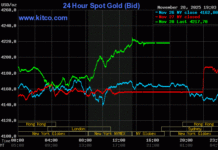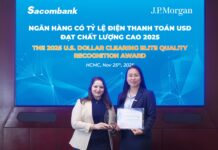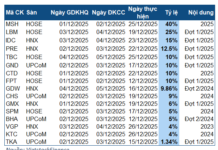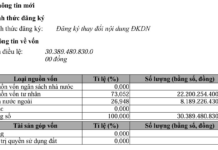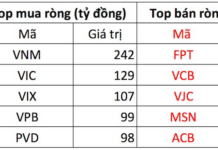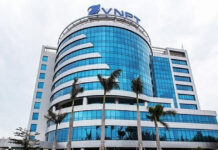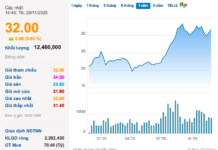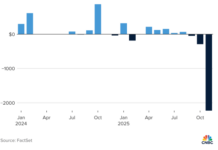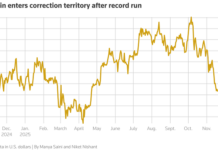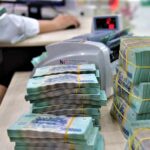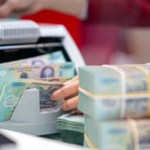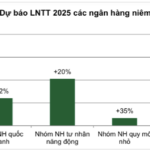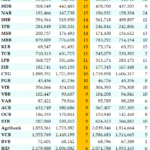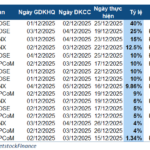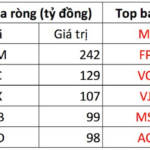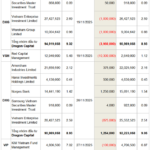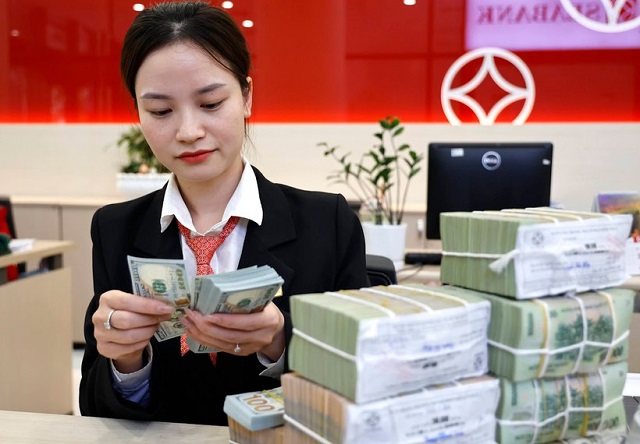
Over the past seven months, the State Bank has proactively managed monetary policy. (Photo: Vietnam+)
|
For many months, deposit interest rates have remained low, facilitating credit growth and supporting economic recovery. However, this development has also put pressure on the banking system, as it has to balance medium and long-term capital sources while facing increasing competition from alternative investment channels such as securities, real estate, and gold.
Increasing capital mobilization pressure
According to the State Bank’s data, as of the end of July 2025, the credit of the whole system had increased by about 10% compared to the end of 2024, equivalent to about VND 1,560 trillion injected into the economy. Meanwhile, capital mobilization increased by only about 6%, significantly lower than the credit growth rate.
This means that many banks have to find ways to retain depositors as capital tends to flow into securities and real estate.
Mr. Dinh Trong Thinh, a finance and banking expert, said: “The current interest rate level is the lowest in the last 10 years, which is favorable for borrowing businesses but makes depositors consider more. If banks rely only on interest rate tools, it will be difficult to retain customers because the stock market is growing strongly, real estate is recovering, and gold is also attracting capital. The fundamental solution is to diversify products, increase added value, not just interest rates.”
In fact, many banks are shifting capital to retail, small and medium-sized enterprises, and green credit – areas that are both safe and associated with sustainable development strategies.
Agribank’s representative said that the bank has just launched a package of VND 30,000 billion for high-tech agriculture, while expanding digital banking services in rural areas.
“Customers depositing money at Agribank not only enjoy interest rates but also access the financial service ecosystem, from QR payments, insurance to online savings. This is how we create more value instead of just racing interest rates,” Agribank’s leader emphasized.
Meanwhile, Techcombank continues to pursue a strategy of serving high-end customers. The bank’s non-term deposits (CASA) accounted for 38.7% in the first half of 2025, one of the highest in the system.
The bank has focused on providing comprehensive financial solutions such as securities, insurance, asset management, and digital banking. This approach helps Techcombank not depend on interest rate competition while building long-term relationships with customers.
Vietcombank also maintains its CASA advantage and expands digital services. Mr. Nguyen Thanh Tung, CEO of Vietcombank, shared at the Banking Conference in July 2025: “Vietcombank focuses on maintaining the CASA advantage and developing digital banking, aiming to retain customers with a diverse ecosystem of services, not just relying on deposit interest rates.”
With this orientation, Vietcombank continues to be one of the banks with stable capital mobilization and sustainable credit growth.
Not only exploiting the domestic market, but some banks also expand capital mobilization channels from international sources. On July 29, 2025, BIDV successfully issued $500 million in international green bonds. This is not only a deal to attract long-term capital but also helps BIDV affirm its reputation in the sustainable development strategy.
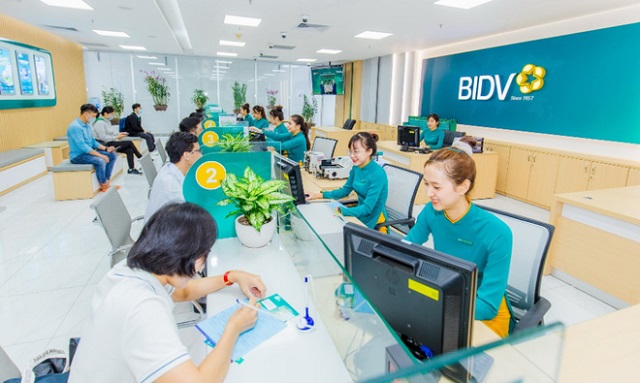 Transaction at BIDV. (Photo: Vietnam+)
|
Mr. Le Ngoc Lam, General Director of BIDV, emphasized: “The successful issuance of international green bonds not only affirms BIDV’s reputation in the market but also demonstrates our commitment to accompanying customers and investors in the journey of sustainable development.”
VPBank stands out with its strategy targeting young customers. The bank launched a preferential home loan package for customers under 35 years old, with an interest rate of only 5.2%/year, a fixed interest rate period of up to 24 months, a loan limit of up to 80% of the property value, and a loan term of up to 25 years.
Ms. Le Hoang Khanh An, CFO of VPBank, said: “With these solutions, in the second quarter of 2025 alone, VPBank’s credit grew by 14%. Among them, mortgage loans led the growth in the individual customer segment, thanks to the recovery trend of the real estate market.”
At the same time, VPBank also recorded diverse credit growth in the group of large enterprises: from manufacturing and processing, wholesale and retail to tourism and hotels, reflecting the strategy of seizing market opportunities while balancing risks.
Motivation for the last months of the year
However, under the pressure of credit growth, the deposit interest rate level has slightly increased at some banks. Accordingly, the average interest rate for 12-month term deposits at commercial banks in the monitored range slightly increased to 4.78%/year, up 0.01 percentage points compared to the end of June, but still lower than 0.08 percentage points compared to the beginning of the year. In particular, the interest rate at state-owned banks remained at 4.67%/year, and private banks slightly adjusted by 3 basis points to 4.90%/year.
“This development reflects the increasing pressure on some banks in mobilizing capital to meet regulatory liquidity ratios. In addition, the growing competition from alternative investment channels such as securities and real estate puts pressure on banks to adjust interest rates to retain capital,” said VnDirect expert.
However, there are still many factors supporting the acceleration of credit disbursement in the last quarter of 2025, especially the improvement of production and business sectors, supportive policies to access capital, and the tendency to reduce bad debts.
According to MBS Securities Company (MBS), credit growth in the second half of 2025 will be driven by two main drivers. First is the disbursement of public investment capital; as of the end of June 2025, the disbursement reached VND 268,000 billion, up 42.3% over the same period but only met 29.6% of the plan. The progress is expected to accelerate in the last months of the year.

The banking industry targets credit growth of about 16% this year, meaning that outstanding loans will increase by about VND 2.5 quadrillion. (Photo: Vietnam+)
|
In addition, there is Resolution 68 of the Politburo on developing the private economy, with a target of having 2 million enterprises by 2030, with the private sector contributing 55-58% of GDP.
MBS assesses that these policies will create a large room for credit to flow into production and business and help banks achieve growth targets.
It can be seen that, in the context of deposit interest rates being difficult to increase significantly again, the solution to retaining customers of banks is not in the race of interest rates, but in diversifying products, personalizing services, and sustainable development.
The capital retention problem is not just about retaining deposits but also about retaining trust and long-term relationships with customers, which is crucial in the era of fierce competition./.
Thuy Ha
– 06:14 22/08/2025
What’s Affecting Interest Rates?
In a thriving economic landscape, with surging credit growth and intense competition for funds, banks are offering varying lending rates. Experts predict a slight upward trend in interest rates by the end of 2025, creating a diverse landscape for borrowers.
The Year-End Credit Sprint: Optimistic Expectations, Quality Assurance Needed
As we move into the final quarter of 2025, a surge in credit is expected, potentially surpassing the annual target set by the State Bank of Vietnam. This presents both opportunities and challenges for the financial and banking system. Experts emphasize the critical need to direct credit to the right sectors, primarily production and business, while effectively managing risks to ensure sustainable development.
The Vietnamese Stock Market: On the Verge of a Golden Growth Cycle
The VN-Index is surging towards the 1,700-point mark, accompanied by record-high market liquidity, with many sessions reaching 70,000 to 80,000 billion VND. This remarkable performance reflects investors’ strong confidence and the allure of the stock market, especially in the context of low-interest rates and tightened speculative real estate investments.






